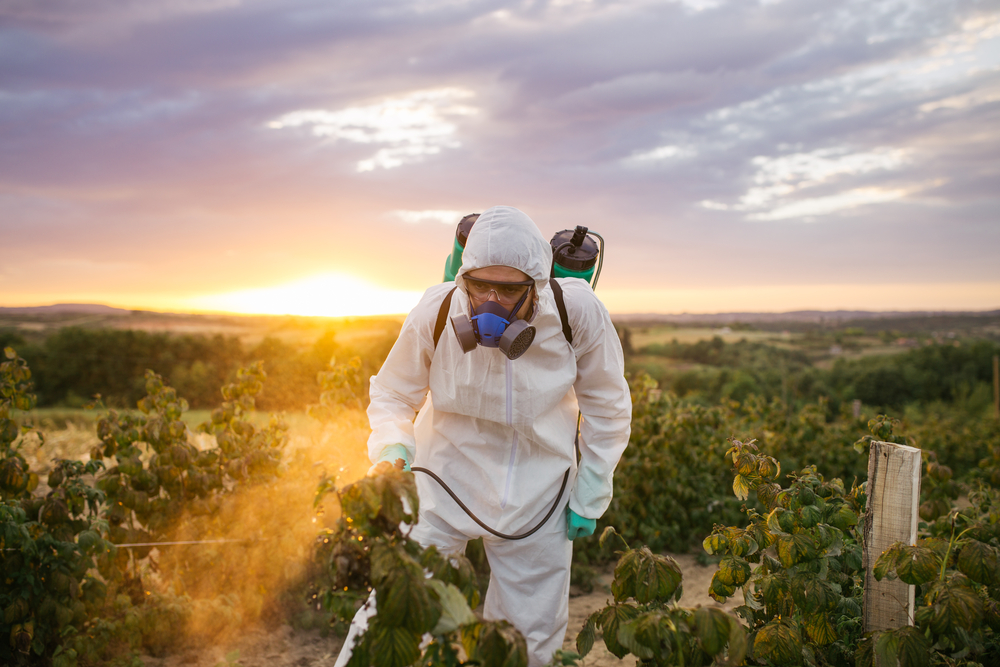Paraquat Exposure: Signs, Symptoms and Health Effects
Paraquat, also known by the brand name Gramoxone, is commonly used as a grass and weed killer in commercial farming and agriculture. Its use in the U.S. is actually increasing as weeds have developed immunity to many other products, including the well-known Roundup. It’s also highly affordable, and American farmers use more than eight million pounds annually.
While paraquat (Gramoxone) may seem like just another herbicide, think again. It is so toxic that even one sip can kill a healthy adult in hours. Thirty countries worldwide have banned it, including the European Union. But the U.S. isn’t one of them, and that doesn’t appear to be changing anytime soon. In 2019 New York Congresswoman Nydia Velázquez tried and failed to pass legislation permanently banning the dangerous substance.

The Environmental Protection Agency (EPA) is required to reassess pesticides every 15 years. Despite its well-known toxicity, over 100 ongoing lawsuits against it, and widespread support of a total ban among several large groups of farm and environmental workers, the EPA reapproved paraquat in October 2021. The approval includes new restrictions to limit exposure to paraquat handlers, but the opposing groups are keeping up the fight in federal courts.
How Dangerous is Paraquat?
Paraquat is only legally available to commercial agriculture entities, not individuals. Anyone working with it must be certified by an EPA training program.
Like any toxic chemical, the damage paraquat can cause to your health increases as the amount and exposure time to increases. Ingesting it almost guarantees death, but even if someone who ingests it survives, they are likely to struggle with heart and/or kidney failure, scarring of the lungs, narrowing of the esophagus and other devastating long-term health effects.
Someone who ingests paraquat will sustain immediate and very painful damage to the mouth, stomach and intestines. Once swallowed, it spreads very quickly throughout the whole body, especially exposed organs like your liver, kidneys and lungs.
Paraquat can also be inhaled or absorbed through the skin, although these less-direct methods take longer to affect your health. While inhaling or absorption is less likely to kill you, it can still be dangerous and cause serious long-term health issues with symptoms that can take weeks, months or even years to appear.
Inhaling paraquat will likely lead to permanent lung damage and breathing problems such as asthma and shortness of breath. And recent research has revealed that there may be a link between paraquat exposure and Parkinson’s disease.
Paraquat and Parkinson’s – What’s the Connection?
Can exposure to paraquat lead to Parkinson’s disease? The EPA says there is “insufficient evidence,” but several studies by reputable institutions suggest otherwise.
Parkinson’s is a progressive movement disorder that begins with mild symptoms – such as occasional shaking or altered facial expressions – and morphs into an increasingly severe and debilitating lifelong disease. It is currently incurable and often forces patients into wheelchairs or beds, requiring constant care, for the rest of their lives.
Beloved actor Michael J. Fox was diagnosed with Parkinson’s in 1991 and has been leading efforts to find a cure for the indiscriminate condition ever since. His research foundation, concerned by the studies linking Parkinson’s to paraquat, has been among those lobbying the EPA for a nationwide paraquat ban. Still, not even his celebrity influence has been able to sway them.
One particularly alarming study by the National Institute of Environmental Health Sciences determined that those exposed to paraquat were 2.5 times more likely to develop Parkinson’s; an Agricultural Health Study found an astonishing 200 percent increase in risk for the disease in paraquat application workers.
And because Parkinson’s is a gradually worsening condition that may not become serious for years, it can be impossible to know the paraquat-related damage until it’s too late.
Signs and Symptoms of Paraquat Poisoning
When someone has been exposed to a large amount of paraquat, some symptoms will present almost immediately and others that will take hours or days to show up. Some of the first symptoms include:
- Burning pain and swelling in mouth and throat
- Nausea and stomach pain
- Vomiting blood
- Diarrhea
- Seizures, shock
Other signs take a little longer to appear but may include:
- Respiratory, kidney or liver failure
- Confusion and cognitive impairment
- Muscle weakness
- Pulmonary edema (fluid in the lungs)
- Holes or burns in esophagus
- Infection or inflammation of the chest cavity
Pets who are exposed to paraquat will have some of the same indicators and should be rushed to an emergency vet immediately.
The bottom line is that anyone who comes into contact with paraquat – especially via ingestion – will probably not survive unless they are medically treated right away, and even then, they’re unlikely to recover without some form of life-altering damage.
What Are My Legal Options If Health Issues Arise from Paraquat Exposure?
Lawsuits against paraquat have been increasing steadily for years. One major manufacturer of the herbicide, Syngenta, has borne much of the brunt of the legal action as many farm and agricultural workers are developing Parkinson’s and making the connection. A Texas crop duster named Michael Kean, who worked with Paraquat for over a decade and was diagnosed with Parkinson’s disease in 2019, filed suit against Syngenta for failing to adequately warn of possible neurological damage.
And Kean is far from the only victim fighting back. More than 150 paraquat cases related to Parkinson’s development are pending in federal courts, and this past June, they were consolidated into multidistrict litigation (MLD) under the U.S. District Court for the Southern District of Illinois (meaning all pretrial proceedings will be done in one court). A jury trial will be held in November 2022. Plaintiffs could receive damages for loss of income, medical expenses, and perhaps the most painful losses of all – physical and mental health, independence and years of their lives.
As with all lawsuits, there is a statute of limitations, so don’t wait to begin a claim if you think you have one – but not without consulting a law firm experienced in paraquat litigation. Having an attorney on your side who knows the ins and outs of these complicated cases and can represent you in a fight against a major corporation is the only way to win your case. It won’t take away you or your loved ones’ health issues from paraquat exposure, but it will go far toward bringing those responsible to justice.




















